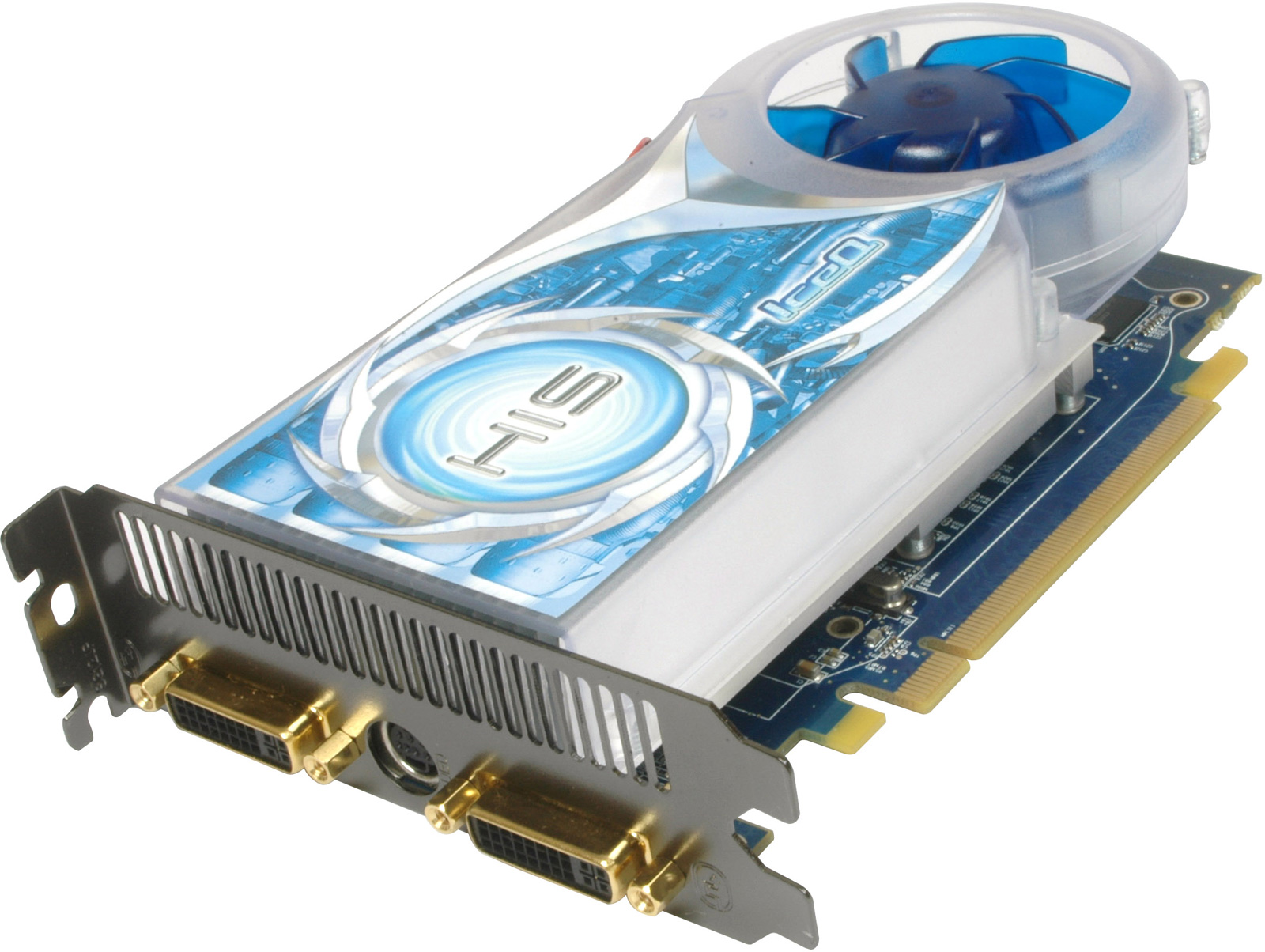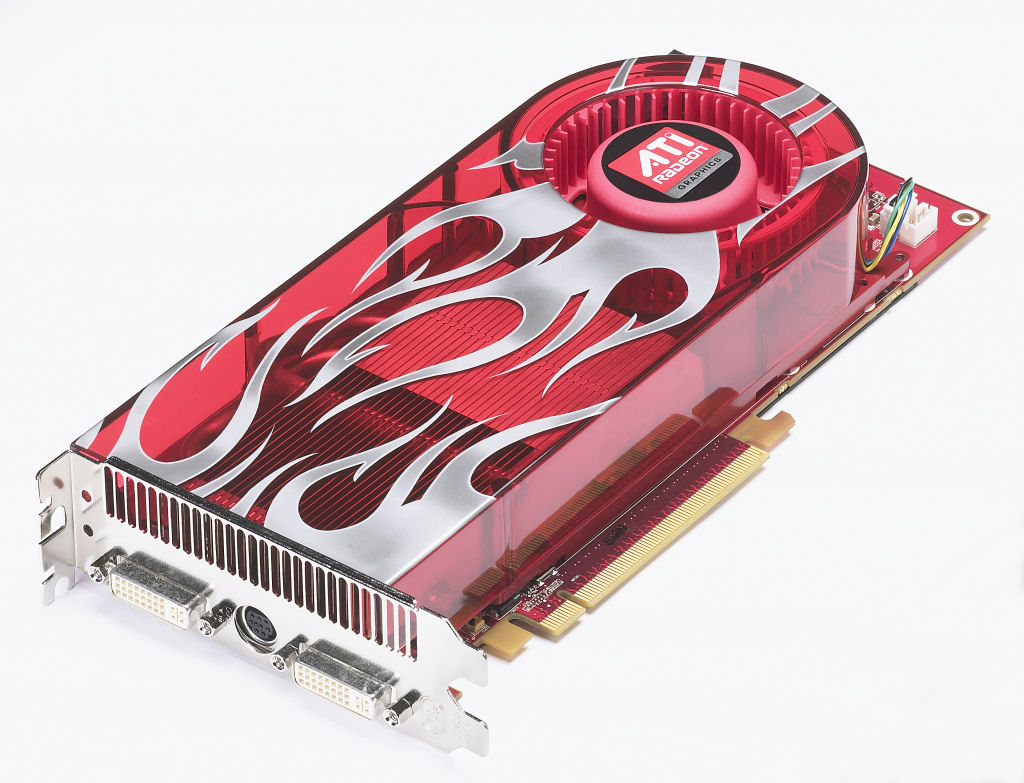25 Years Of Graphics History: A Farewell To ATI, In Pictures
ATI graphics were around for 25 years, 10 of them centering on the Radeon family. As the ATI brand fades away, we're left to remember the company's most noteworthy desktop cards, right after the 6970/6950 launch and just before the Radeon HD 6990 emerges.
2006 • X1650 Pro: The Mediocre Mid-Range
2006 • X1650 Pro: The Mediocre Mid-Range
ATI tried to do battle with the seventh-generation GeForce cards using its Radeon X1650 Pro, even if only in the mid-range segment.
2006 • X1950 XTX: The Late High Flyer
2006 • X1950 XTX: The Late High Flyer
Out of the way! It's late, but here it comes anyway: the fat Big Block from ATI. Using the X1950 XTX, ATI swept away all GeForce 7-series cards from Nvidia and grabbed the performance crown. It was popular and extremely fast, but also hot and expensive.
Altogether, the Radeon X1950 XTX is the first thing that comes to mind when trying to remember the times ATI has beaten its competitor (Ed.: I don't know about that; I always think back to R300, personally).
The GeForce 8800 was the first card able to stand up to it, but that was an impressive card in itself. And thus began the history of graphics cards with unified shader architectures.
2007 • HD 2600 Pro: Unified Shader, Light Edition
2007 • HD 2600 Pro: Unified Shader, Light Edition
Get Tom's Hardware's best news and in-depth reviews, straight to your inbox.
The GeForce 88xx series did not face much opposition from AMD's high-volume Radeon HD 2600 Pro. Even the 8600 GTS did not have much to fear, really.
However, the ATI card did offer the possibility of outputting audio directly through the DVI output for the first time. Not a bad argument for the first HTPCs. Manufacturers like HIS set new standards with powerful and quiet cooling solutions.
2007 • HD 2900 XT: The Blown GeForce Hunter
2007 • HD 2900 XT: The Blown GeForce Hunter
With brutal raw performance, the fanboys were not the only ones surprised that this card hopelessly lagged behind when it was launched. Only much later, with better drivers, was it able to make up ground. It was loud, hot and in the end not overly successful.
2007 • HD 3850: The Third Attempt
2007 • HD 3850: The Third Attempt
ATI did not exactly create a powerhouse with the Radeon HD 3850, but it was still a good all-around card. Speed-wise, it stood no chance against competing GeForce cards. But a reasonable price tag made it a popular mid-range volume product.
2007 • HD 3850 AGP: Niche Solution Instead Of Peak Power
2007 • HD 3850 AGP: Niche Solution Instead Of Peak Power
Take a bridge chip and make a modern PCIe card AGP-compatible again. It was a great concept, but suffered from mediocre drivers. It was never able to take advantage of the latest Catalyst drivers, so customers either went with the AGP competition or gave up on the interface altogether.
2008 • HD 3870 X2: Tag Team, Back Again
2008 • HD 3870 X2: Tag Team, Back Again
It took a very serious card to even attempt breaking through Nvidia's GeForce dominance at this point. After all, by now, G80 had turned into an even more efficient G92.
Fortunately for ATI, the Radeon HD 3870 X2 was enough to take back the performance crown, even if it took a considerate amount of silicon to address the issue. Power consumption was not this board's strong suit, needless to say.
2008 • HD 3850 X2: An Exotic From Asus
2008 • HD 3850 X2: An Exotic From Asus
Asus designed its own card with two Radeon HD 3850 chips, but failed to attract much interest from buyers.
2008 • HD 4670: The Mid-Range, Redefined
2008 • HD 4670: The Mid-Range, Redefined
Without any additional power connectors, the low-power HD 4760 was an interesting card from ATI adopted by the HTPC crowd. Even Assassin’s Creed ran quite fluidly at 1680x1050.
2008 • HD 4870: Extremely Popular, Just As Affordable, And At Least As Hot
2008 • HD 4870: Extremely Popular, Just As Affordable, And At Least As Hot
With its Radeon HD 4870, ATI had done it again, approaching the performance crown. It overtook Nvidia's competing cards in a few benchmarks, but the bigger news was that the company was back.
A slightly lower price made up for any shortcomings, such as higher idle power consumption and heat generation.

Igor Wallossek wrote a wide variety of hardware articles for Tom's Hardware, with a strong focus on technical analysis and in-depth reviews. His contributions have spanned a broad spectrum of PC components, including GPUs, CPUs, workstations, and PC builds. His insightful articles provide readers with detailed knowledge to make informed decisions in the ever-evolving tech landscape
-
tacoslave I guess it makes the whole fusion thing a little less confusing for those not in the know.Reply -
sideshowbob32 Ha brings back a few memory's i still have a ATI 9600 in my part stash, and my 4890s still perform grate in CF. But will miss having a ATI logoReply -
eklipz330 my list of ati cardsReply
7200 se
9600 pro
x800 xl
2x hd 2900xt
hd 4850
none of them failed
not a fanboy... just a fan of quality products
...i'll still mumble ati before reading radeon... -
NuclearShadow Farewell ATI while you've been owned by AMD for sometime now it was always nice to at-least see the name. I'm a lucky one that can remember those earliest products. Sleep well old friend.Reply -
agnickolov Interesting how ATI's probably biggest success against nVidia wasn't even mentioned - Radeon 9700 Pro. That card completely obliterated its GeForce FX 5800 competitor and was superior even to the GeForce FX 5900 successor! At least its 9800 Pro successor is there...Reply









